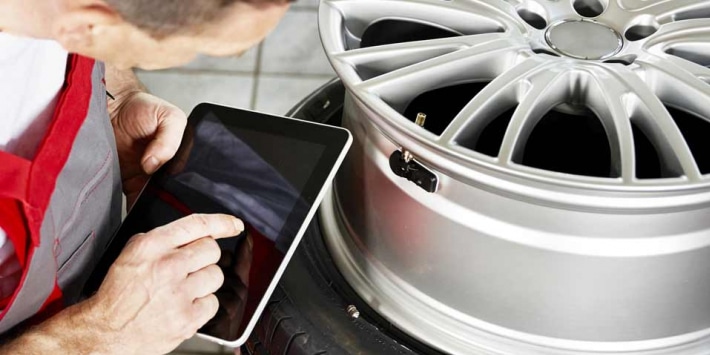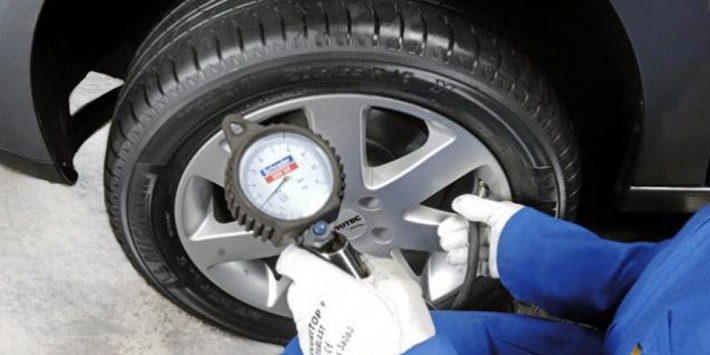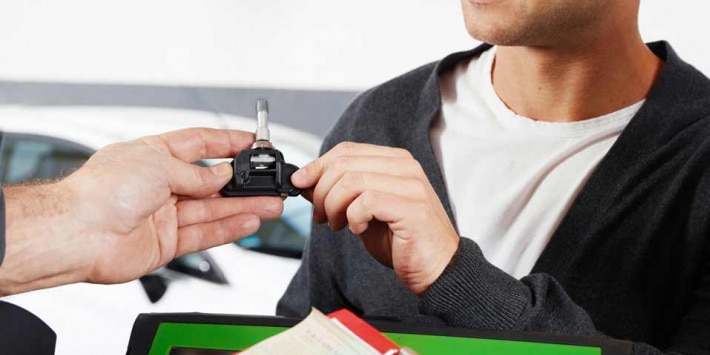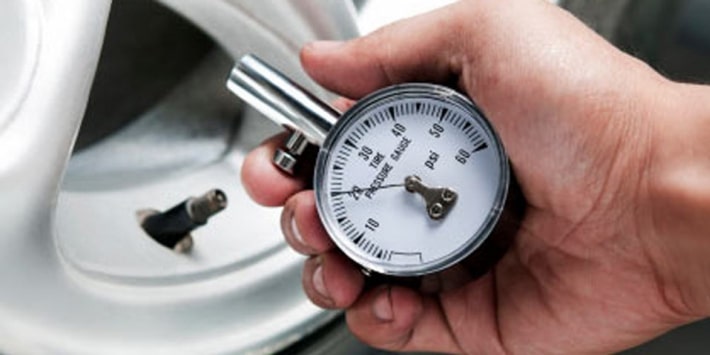Getting ready for a long car journey? Don't forget to check your tyres: after all, they’re the only point of contact between your car and the road! Here's our checklist of everything you need to consider to set off with total peace of mind...
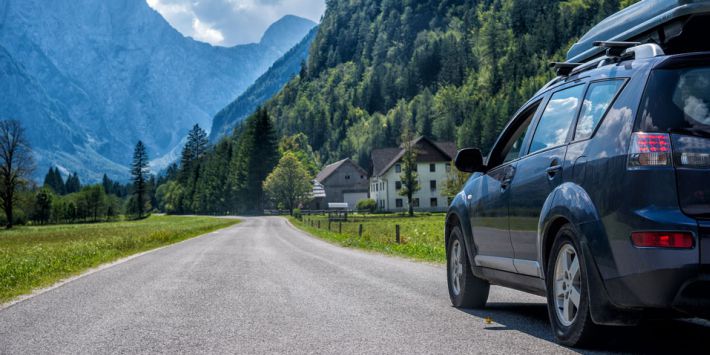
The three keys to checking your tyres
Tread wear
Start by checking the tread depth of your tyres. First of all, check that the tread wear indicator has not been reached anywhere across the tyre. The tread wear indicator is a small 1.6mm-thick cross rib found in the main grooves of the tyre. It indicates the minimum legal tread depth. If the tread is approaching the level of the indicator and you are planning a long trip, it might be better to change your tyres before starting out.
NB: some manufacturers such as Nokian or Continental use two tread wear indicators, the first indicating the threshold at which the tyre’s wet weather performance starts to deteriorate, and the second for the legal minimum tread depth.
Check the sidewalls of your tyres for any cuts, cracking, tears, bumps, bulges or other signs of damage. You can simply run your hand over the surface of the tyre to detect any potential anomalies.
rezulteo tip:
Rotate your front and rear tyres on a regular basis so they wear at the same rate.
See our guide to tyre rotation
Tyre pressure
Check your tyre pressures carefully: if your tyres are not correctly inflated (over or under-inflated) there is a serious risk of a blowout, puncture or excessive wear. Despite this, statistics show that half of the vehicles on the road during busy holiday periods have under-inflated tyres!
Tyre pressures should be checked cold, i.e. before you start out on your journey. If you do check your pressures during a journey when your tyres have heated up and the air has started to dilate, add 4 PSI (0.3 bars) to the recommended pressures for your vehicle.
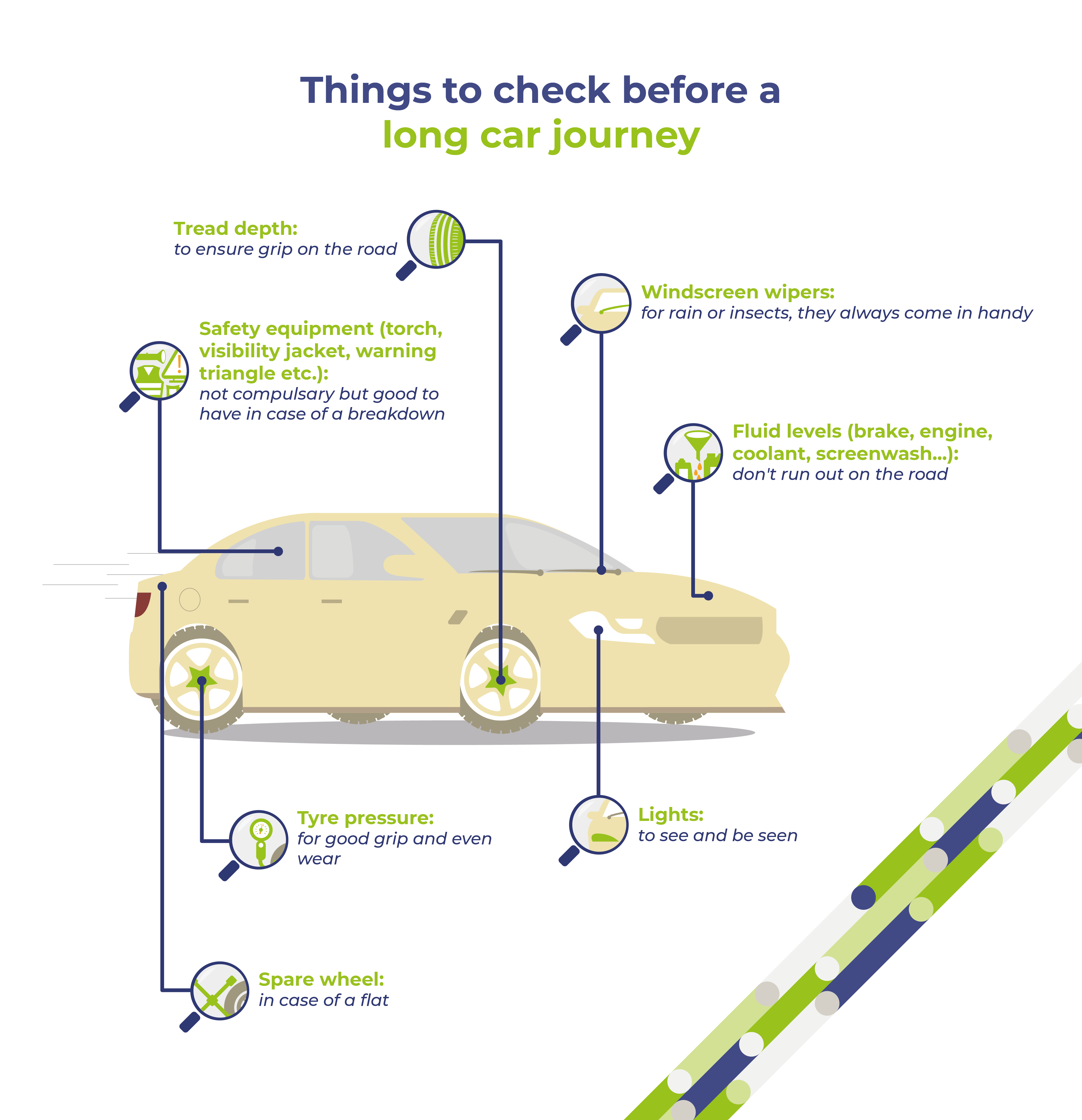
If your car is heavily loaded or you are pulling a trailer or caravan, check the manufacturer’s recommendations on you vehicle door to avoid bulging.
Find out more about tyre pressure
rezulteo tip:
Specific recommendations for trailers and caravans:
- Comply with the load and speed limits recommended by the manufacturer of the towed vehicle.
- If travelling with a load close to the maximum capacity, the vehicle should be fitted with reinforced tyres.
- Follow the manufacturer’s tyre pressure recommendations. For information purposes, here are a couple of general guidelines:
- For a correctly loaded trailer or caravan, the recommended tyre pressures are usually 36 PSI (2.5 bars) for a standard tyre and 43 PSI (3 bars) for a reinforced tyre.
- For a heavily loaded trailer or caravan, add 7 PSI (0.5 bars) to the pressures: so 43 PSI for a standard tyre and 50 PSI (3.5 bars) for a reinforced tyre.
- Do not use your caravan or trailer tyres for more than five seasons. When parked for an extended period of time, tyres tend to lose their shape. If you notice any splitting near the rim, the tyres should be replaced immediately.
Spare wheel
Anybody and everybody can get a flat tyre. Fortunately it’s not an everyday occurrence, you just need to be prepared. Make sure your spare tyre is in good condition and that you have everything you need to change a tyre in the car and ready to use.
If your vehicle has a puncture repair spray kit instead of a spare wheel, check the expiry date before leaving.
Roadside assistance may also be included in your car insurance or purchased with your tyres. Remember to make sure you have the emergency telephone number with you in case of an incident.
Other vehicle checks
Fluids
Before starting your journey, check the levels of your engine oil, coolant, brake fluid, screenwash and power steering fluid. You can consult your vehicle handbook to find out how to do this. In the summer, high temperatures can mean cars tend to overheat which is why it is so important to check the level of coolant.
Optics
Clean your headlights and windows for up to a 30% increase in light. Ensure there are no impacts on your windscreen and check all your lights and indicators to make sure you can see and be seen.
Windscreen wipers
Check your windscreen wipers are flexible and capable of correctly cleaning your front and rear windscreens.
One last piece of advice before you take to the road: check the weather forecast and recommendations from the highways agency. Heavy rainfall which leaves roads slippery will mean increased braking distances as well as an increased risk of aquaplaning. In the winter, snowfall and ice can also catch you out. Remember to reduce your speed and to take regular breaks.

